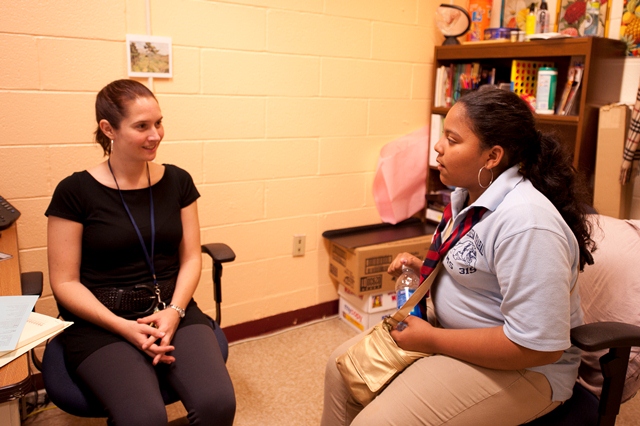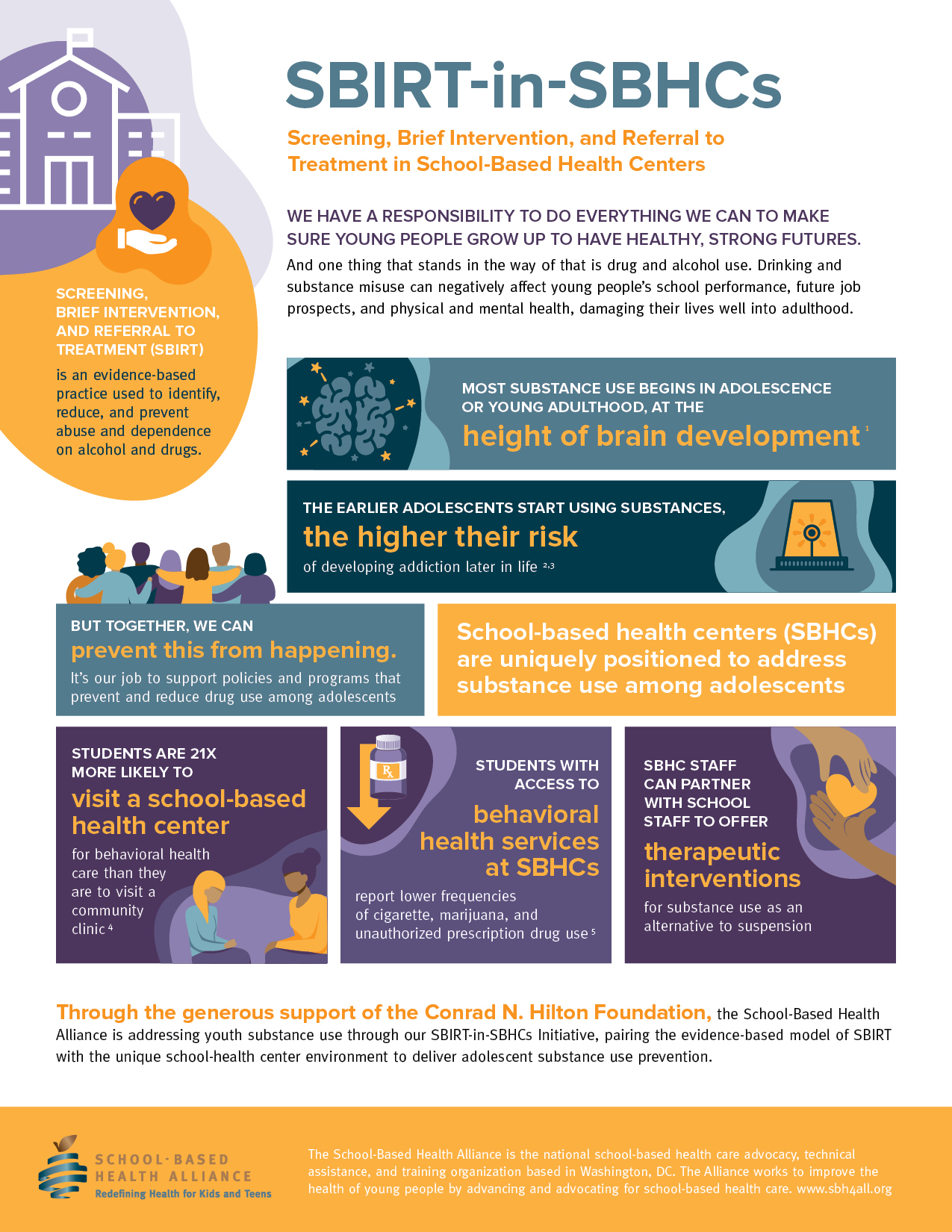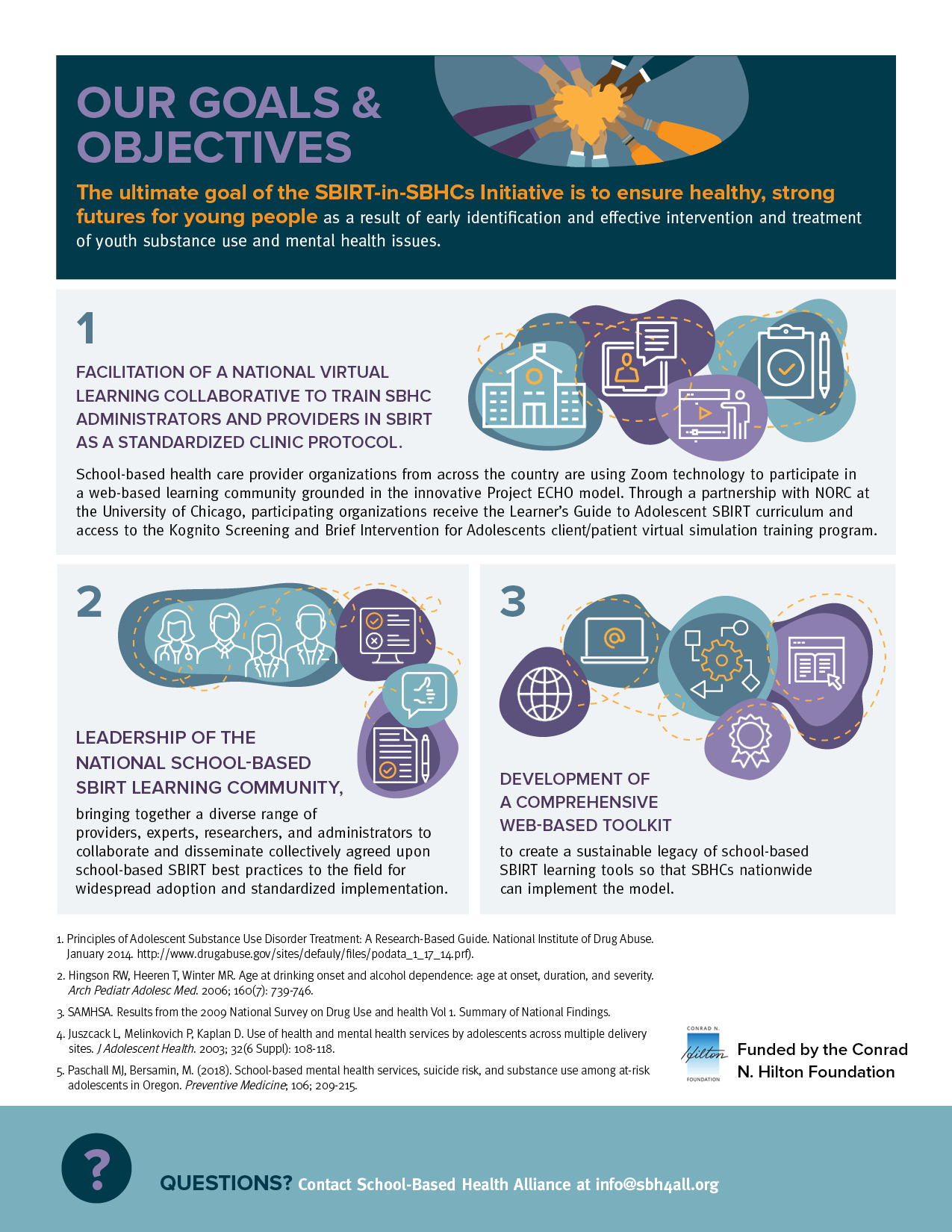Substance Use Prevention
This initiative pairs the evidence-based model of SBIRT (Screening, Brief Intervention, and Referral to Treatment) with the unique school-clinic environment of SBHCs. The SBIRT model delivers evidence-based adolescent substance use prevention while also addressing related issues such as lack of youth treatment options, co-occurring diagnoses, adolescent engagement in health care, and restorative justice.
About the Substance Use Prevention in SBHC Initiative
The 2016 Surgeon General’s Report on Alcohol, Drugs, and Health, titled “Facing Addiction in America,” is a call to action for the school-based health care (SBHC) field and others. More than 90 percent of individuals who experience a substance use disorder as an adult began their use before the age of 18. Assessing risk and protective factors is a service provided by all SBHCs, presenting the opportunity to develop and enhance substance use prevention and early intervention, delaying the onset of use, and decreasing the likelihood of addiction as an adult. Actively screening and intervening with youth will lead to better outcomes academically and overall health and well-being.

Project Description
From 2015 through 2021, the School-Based Health Alliance, with generous support from the Conrad Hilton Foundation, led an effort to test the adaptation of SBIRT into school health care settings. The process of training school-based health providers in SBIRT and testing the feasibility of the approach across a variety of sites around the country afforded us the expertise to confront implementation challenges, as well as identify keys to success. Through our own projects and as a partner/convener on numerous other projects, we continue to promote and refine the SBIRT in schools model. To learn about strategies for implementing SBIRT in SBHCs, please visit our Adolescent Substance Use Prevention in SBHCs Toolkit.
Our work focused on three areas:
- Increased training for the SBHC field, using new models and leveraging technology to serve more providers and centers while also creating legacy training tools.
- Development of a national school-based SBIRT learning collaborative to share tools and resources, increase partnerships and publication, collectively agree on best practices to share with the field, and promote the development of clear outcome measures.
- Creation of a comprehensive web-based toolkit, drawing from lessons learned through SBHA’s implementation experiences as well as those of the national school-based SBIRT learning collaborative. The toolkit serves as legacy for the field by creating an accessible way for sites to pursue implementation on their own.
Substance Use Prevention
This initiative pairs the evidence-based model of SBIRT (Screening, Brief Intervention, and Referral to Treatment) with the unique school-clinic environment of SBHCs. The SBIRT model delivers evidence-based adolescent substance use prevention while also addressing related issues such as lack of youth treatment options, co-occurring diagnoses, adolescent engagement in health care, and restorative justice.
About the Substance Use Prevention in SBHC Initiative
The 2016 Surgeon General’s Report on Alcohol, Drugs, and Health, titled “Facing Addiction in America,” is a call to action for the school-based health care (SBHC) field and others. More than 90 percent of individuals who experience a substance use disorder as an adult began their use before the age of 18. Assessing risk and protective factors is a service provided by all SBHCs, presenting the opportunity to develop and enhance substance use prevention and early intervention, delaying the onset of use, and decreasing the likelihood of addiction as an adult. Actively screening and intervening with youth will lead to better outcomes academically and overall health and well-being.

Project Description
From 2015 through 2021, the School-Based Health Alliance, with generous support from the Conrad Hilton Foundation, led an effort to test the adaptation of SBIRT into school health care settings. The process of training school-based health providers in SBIRT and testing the feasibility of the approach across a variety of sites around the country afforded us the expertise to confront implementation challenges, as well as identify keys to success. Through our own projects and as a partner/convener on numerous other projects, we continue to promote and refine the SBIRT in schools model. To learn about strategies for implementing SBIRT in SBHCs, please visit our Adolescent Substance Use Prevention in SBHCs Toolkit.
Our work focused on three areas:
- Increased training for the SBHC field, using new models and leveraging technology to serve more providers and centers while also creating legacy training tools.
- Development of a national school-based SBIRT learning collaborative to share tools and resources, increase partnerships and publication, collectively agree on best practices to share with the field, and promote the development of clear outcome measures.
- Creation of a comprehensive web-based toolkit, drawing from lessons learned through SBHA’s implementation experiences as well as those of the national school-based SBIRT learning collaborative. The toolkit serves as legacy for the field by creating an accessible way for sites to pursue implementation on their own.

